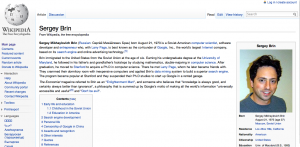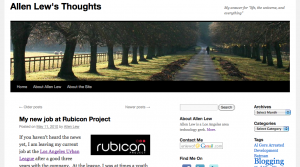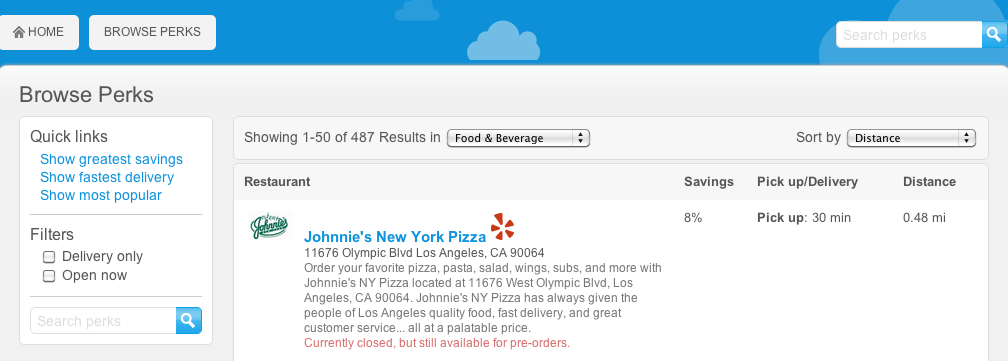WP Photo Sphere Smooth is a fork of WP-Photo-Sphere that uses a faster Javascript library from Damien Sorel. Use it to embed photo spheres and panoramas like the ones linked below:
Talkatone: The Missing Piece of the Google Voice App
 Google Voice is a very useful service by Google, adding features to your phone like voicemail transcription, call recording, and call blocking. Strangely missing from Google Voice’s main features is the most important part of the telephone: making calls. In order to do that, you have to use your regular phone or use Gmail’s calling service. However, there’s an app that allows you to use that Gmail calling service and use it on your iOS and Android device to make calls: Talkatone. Now instead of using your phone minutes (or if your device doesn’t even have a cellular connection), you can use the app to make calls over wi-fi or 3G. It’s very handy if you say lose a phone or are running low on minutes and need to make a call. The app even came in handy when I was in Japan and needed to make a free call to the United States (probably routed my call through the us servers, but your mileage may vary).
Google Voice is a very useful service by Google, adding features to your phone like voicemail transcription, call recording, and call blocking. Strangely missing from Google Voice’s main features is the most important part of the telephone: making calls. In order to do that, you have to use your regular phone or use Gmail’s calling service. However, there’s an app that allows you to use that Gmail calling service and use it on your iOS and Android device to make calls: Talkatone. Now instead of using your phone minutes (or if your device doesn’t even have a cellular connection), you can use the app to make calls over wi-fi or 3G. It’s very handy if you say lose a phone or are running low on minutes and need to make a call. The app even came in handy when I was in Japan and needed to make a free call to the United States (probably routed my call through the us servers, but your mileage may vary).
My Betterworks-Yelp Reviews Script

My company got signed up for the Betterworks perks program a few months back. Betterworks pays employees of their customers (my employer in this case) $50 a month to spend on food takeout, messages, car washes, and other fun activities. However, I was having a hard time finding figuring out the quality of the service from their listings, so I would search for reviews on Yelp. While that was easy enough on its own, I found a script that added a Yelp review search link to Restaurant.com and thought to myself, why not use this for Betterworks? So I modded the script for my own use, and now I have one button search Yelp for business reviews from Betterworks. Kind of neat. Install with Greasemonkey for Firefox and then click on the script link; Chrome users need Tampermonkey (Update: Tampermonkey is no longer needed thanks to code from Erik Vold). Source code is on Github.
My Favorite Twitter Tools

The Twitter ecosystem gets bigger with each passing day and developers are building more and more great tools to use with it. Listed below are some of my favorite ways of using these developer tools with Twitter.
- Natter– The official Twitter app for Facebook has not been updated for a while (not for a lack of trying on Twitter’s part either). Fortunately, Natter improves on the official app in a couple of ways. First, it will actually take links you tweet about and put in a Facebook like preview box with a thumbnail as well. Second, Twitter names get translated to real names listed on their profiles, so you don’t show off the @username notation. Lastly, comment replies on Facebook are sent back to your Twitter stream as @mentions from Natterapp, which means you can track your conversation on Twitter. The one improvement I’d like to see from Natter is to have retweets posted on your Facebook profile like LinkedIn currently does. Still, if you were looking for a better way to integrate your Twitter and Facebook accounts, this is the app for you.
Continue reading “My Favorite Twitter Tools”
My Sergey Brin Photo on Wikipedia

My photo of Sergey Brin (cofounder of Google) is now the photo used on his Wikipedia entry. This is the fourth photo I know of from my photo collection used on Wikipedia.
Continue reading “My Sergey Brin Photo on Wikipedia”
Site Changes for 2010

With the long 4th of July Weekend, I thought it was time for my yearly site refresh. After upgrading to WordPress 3.0 (which has a number of advanced features like Custom Post Types and Multiple Sites installations), I decided to make two major cosmetic changes to the site.
- I decided to change the site’s theme to Thirty Ten, a three-column version of the new WordPress default theme, Twenty Ten. Like all of the times I change themes, the old theme is still pretty good, but I just felt the need to experiment with a new design. I especially like that asides have been given their own style and that it’s easy to place my own header images (which I hope to do in the coming weeks).
- Since I recently joined up with an online advertising company, I wanted to understand more about the business. So I reactivated my Google Adsense account, and decided to place ads on my site and feed. I had resisted putting ads on my site since I first started it (which when I think about it seems odd, since I was making less money then I do now), but it felt right to try this out. We’ll see how this experiment goes.
So check feel free to check out my new web site at allen.alew.org.
My new job at Rubicon Project
![]() If you haven’t heard the news yet, I am leaving my current job at the Los Angeles Urban League after a good three years with the company. At the league, I was at times a youth mentor, interview coach, webmaster, and then also found some time to do my regular job of fixing computers and providing technical support as a member of the IT department.
If you haven’t heard the news yet, I am leaving my current job at the Los Angeles Urban League after a good three years with the company. At the league, I was at times a youth mentor, interview coach, webmaster, and then also found some time to do my regular job of fixing computers and providing technical support as a member of the IT department.
However, I recently received an amazing opportunity to join up with The Rubicon Project, an internet company with a “mission to automate the $65 billion global online advertising industry.” There I will be working alongside their Engineering Team doing Quality Assurance for the Project’s platform. It’s a great new opportunity to work with great new people, but it’s also bitter sweet to leave a place you have been working at for a little while. To all my coworkers at the League, good luck to all of you. And to all my new coworkers at Rubicon, I look forward to meeting all of you.
If you want to know more about the company, I’ve enclosed a Youtube video of the Rubicon Project’s HQ after the jump: Continue reading “My new job at Rubicon Project”
Monetization Models for Video on the Internet
I had a brief discussion with a friend about making money with Internet video. We looked at a couple of business models for a nonprofit to make money online and realized there were a couple of ways anybody could make some money with Internet video. Here are some suggestions for almost anybody to earn revenue from video on the web:
- Take advertising on your site and/or videos. This probably isn’t feasible as a nonprofit (Update: this is possible with a nonprofit), but online advertising revenues will give you a somewhat decent amount of money for the amateur and is the most common video revenue model. In addition to ads on the producer’s website (generally provided by a third-party), most video hosting sites like Youtube or my personal favorite, Blip.tv, allow ads to be inserted before and after videos, and at designated times during the video. Continue reading “Monetization Models for Video on the Internet”
Automatic FTP uploads and downloads using BAT scripts
How to automate FTP uploads from the Windows Command Line – This BAT script uses the FTP command in the command line and automating the actions into a script. The script can then be paired with other processes (like Scheduled Tasks) to create an automated FTP process.
Los Angeles Urban League Event Board
In a similar vain to the Job Board I built for the LA Urban League, I created an event board using WordPress. The main plugins I’ve used are the Event Calendar for the event information and the Geopress plugin for locations.

